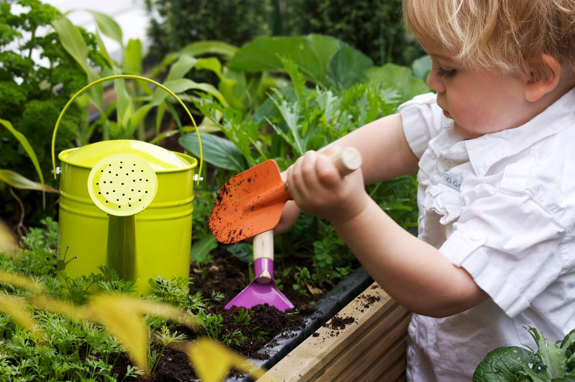Children learn through a variety of mediums and working with kids on a garden project is a sure way of getting them all excited. Gardening can be containerized or in a garden itself, and is a great project for kids to get involved in. While they will enjoy growing plants, this is a great way to keep them from being bored too. As they participate in the gardening project, planting their own foods, they will be learning at the same time even as they get their hands dirtied. Kids tend not to want to eat vegetables, but if they had a hand in growing them they may just decide to eat what they have grown.

Choosing the Pots
Garden pots are available in several styles and the materials used to make them; clay, wood, plastic, stone and others. But when selecting garden pots for kids, choose plastic. They don’t break easily and they are lightweight. Pots made from wood would be the next choice but these are not able to hold water well.
The next step would be to have the kids decorate the pots. Non-toxic paints such as acrylic are great for wood and plastic. When the paint is dried, allow the child to put the pots in a location you have decided on. Add soil after this as this will prevent the kids from having to transport the heavy pots with the soil to the desired location.
Potting Soil
Select potting soils as against ordinary dirt. Potting soils for use in containers are specially blended and are made to retain water, which means minimal maintenance and watering. Plants that are freshly placed will need nutrients to help them grow. The nutrient can be mixed with the potting soil, but ensure that you mix the right amount by following the guidelines printed on the bag. If guidelines are ignored, the results could be dead plants.
Adding Plants
Whatever plant you decide on; whether herbs, flowers or vegetables, you need to choose the type of plants. After choosing your plant type, your next step is to select the size of the plant and this should be appropriate to the size of the pots. Some plants need small containers while others will need larger containers. Tomatoes tend to need larger containers but these can be transplanted into bigger containers if necessary.
Garden Plot
Of course, if you prefer to grow your plants in a garden, you can mark off an area for your child’s garden. Grow vegetables that have unusual, colors such as purple carrots and blue potatoes. Encourage the child to make a garden journal and keep track of the progress from bare earth to seedlings, to full grown plants and then to produce. Encourage the child to draw
Lucas Barnes writes about a range of gardening topics for Plantdex

